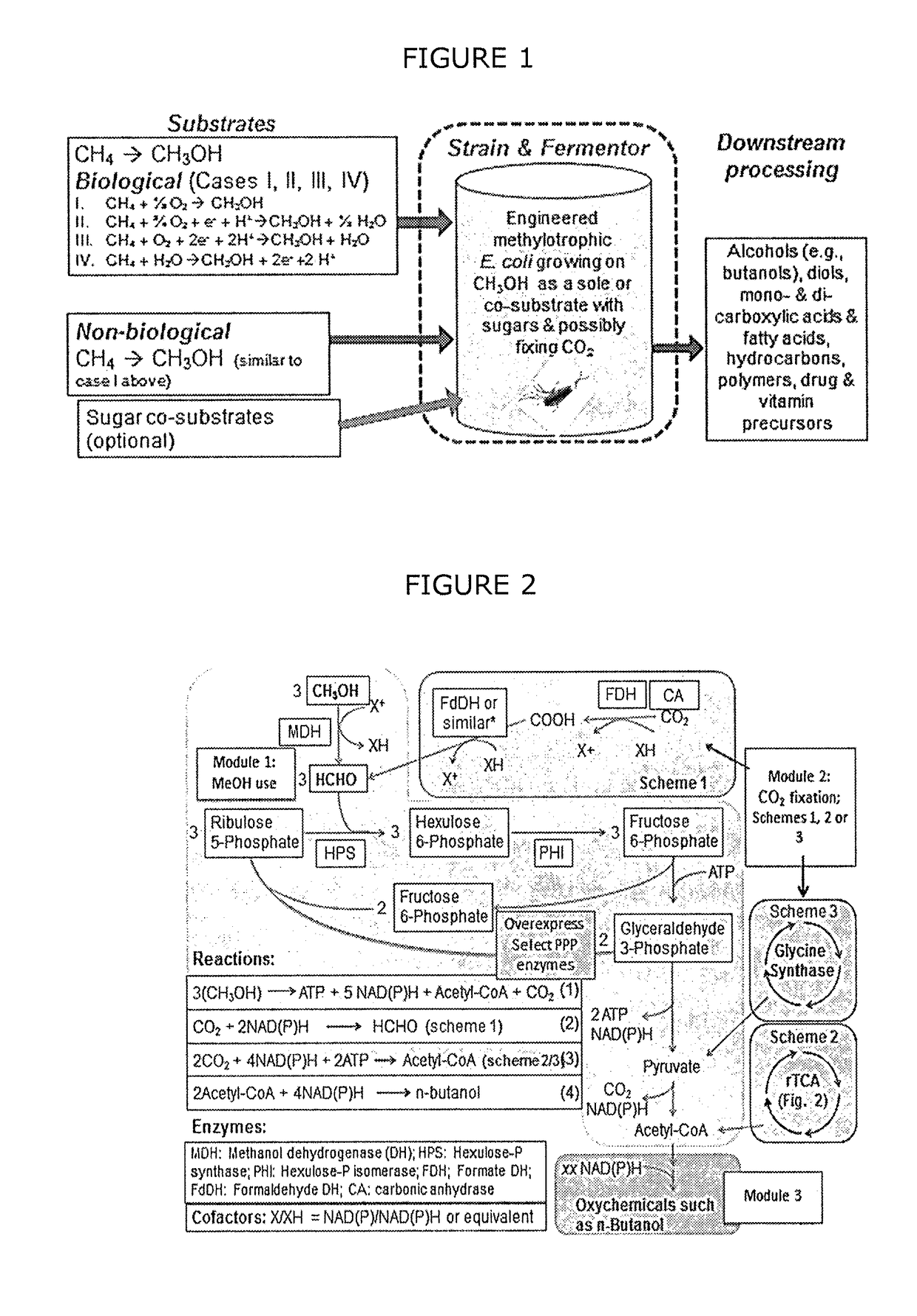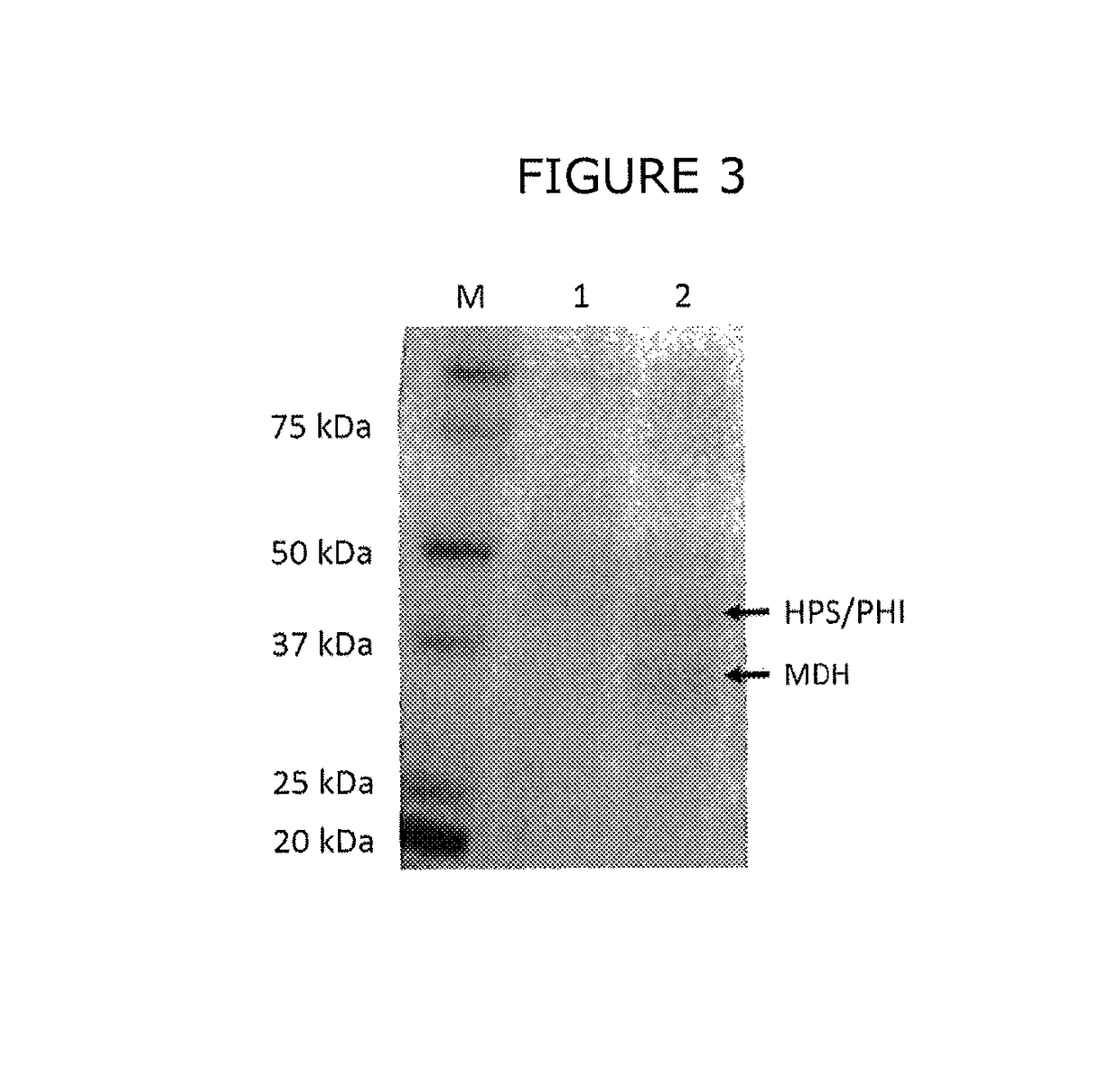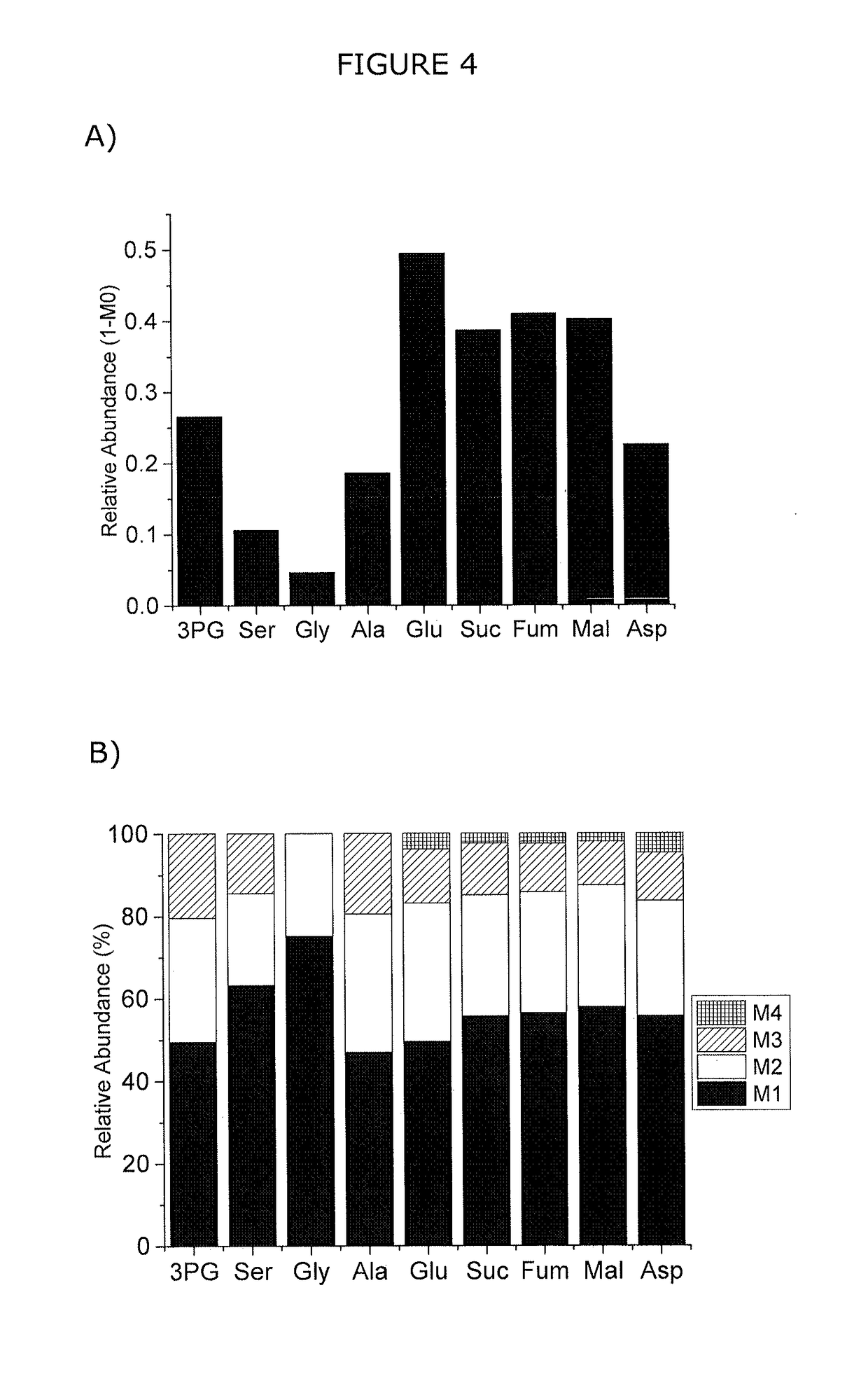Synthetic methylotrophy to liquid fuels and chemicals
a technology of synthetic methylotrophy and liquid fuel, applied in biofuels, lyases, fermentation, etc., can solve the problems of poor transportation of natural gas, inability to compete with the production of liquid fuel through the fischer-tropsch process, and inability to convert chemically to syngas, etc., to achieve the effect of improving the production of metabolites
- Summary
- Abstract
- Description
- Claims
- Application Information
AI Technical Summary
Benefits of technology
Problems solved by technology
Method used
Image
Examples
example 1
[0103]Growth on Methanol and Biomass Labeling from 13C Methanol of E. coli Strain Carrying Plasmid pETM6PtacBst_MDH / Mg_RuMP Strain
[0104]We constructed a vector utilizing the pETM6 backbone, the Ptac promoter along with the MDH gene from B. stearothermophilus and the HPS-PHI fusion from M. gastri. These genes, as currently constructed, are in a monocistronic configuration. Cultures were pre-grown and induced using the following protocol. A single colony was picked from a LB plate and grown at 37° C. for 6 h in LB broth. These cultures were then pelleted and resuspended at an OD600 of 0.5 in MOPS media containing 0.4% ribose and 0.1 mM IPTG for 12 h at 37° C. Samples were taken from these overnight grown cultures, lysed and analyzed for expression of both the MDH and RuMP fusion protein. Cultures induced overnight in MOPS ribose were also resuspended in fresh MOPS media containing 500 mM 13C methanol at an initial OD600 1.0. Samples were taken at 6 and 18 h for GC-MS analysis of 13C m...
example 2
[0107]Methanol is Incorporated into Biomass and Supports Cell Growth. Methanol as a Co-Substrate to Improve the Capability of Synthetic Methylotrophic E. coli to Produce More Reduced Products Such as Alcohols, Carboxylic Acids and Hydrocarbon Molecules
[0108]Because methanol is more reduced than most sugars typically used as fermentation substrates, use of methanol as a co-substrate will result in the production of more reducing equivalents compared to most sugars and will thus lead to better yields for producing metabolites like alcohols, carboxylic acids and hydrocarbons. We thus hypothesized that methanol could be metabolized by the recombinant E. coli strain when grown in the presence of additional carbon sources. After overnight induction in MOPS plus ribose, cultures were transferred to MOPS containing a mixture of methanol (500 mM) and glucose (2 mM). The strain expressing the genes for methanol utilization was able to grow to a higher OD600 and with a faster growth rate than ...
example 3
[0109]Methanol Utilization Supports Cell Growth in Growth Media with Typical but Diluted LB Composition
[0110]Media of industrial fermentations typically contain supplements like yeast extracts and protein hydrolyzates. Heavy use of such supplements have been used in several celebrated new metabolically engineered strains like for the production of i-butanol and the use of reverse beta oxidation to support growth and metabolite production. Here we used a very diluted (1:4) LB broth to show that methanol is utilized without any sugars present and supports cell growth. Standard LB broth contains 10 g / l tryptone and 5 g / l yeast extract to supply carbon and energy for growth. For the growth experiments in methanol, we used MOPS media that supplemented with 2.5 g / l tryptone and 1.25 g / l yeast extract (1:4 LB:MOPS) in addition to 500 mM methanol to assay for growth and methanol incorporation.
[0111]When the MeOH utilizing strain was grown in a 1:4 mixture of LB:MOPS, we were able to observe...
PUM
| Property | Measurement | Unit |
|---|---|---|
| temperature | aaaaa | aaaaa |
| time | aaaaa | aaaaa |
| temperature | aaaaa | aaaaa |
Abstract
Description
Claims
Application Information
 Login to View More
Login to View More - R&D
- Intellectual Property
- Life Sciences
- Materials
- Tech Scout
- Unparalleled Data Quality
- Higher Quality Content
- 60% Fewer Hallucinations
Browse by: Latest US Patents, China's latest patents, Technical Efficacy Thesaurus, Application Domain, Technology Topic, Popular Technical Reports.
© 2025 PatSnap. All rights reserved.Legal|Privacy policy|Modern Slavery Act Transparency Statement|Sitemap|About US| Contact US: help@patsnap.com



